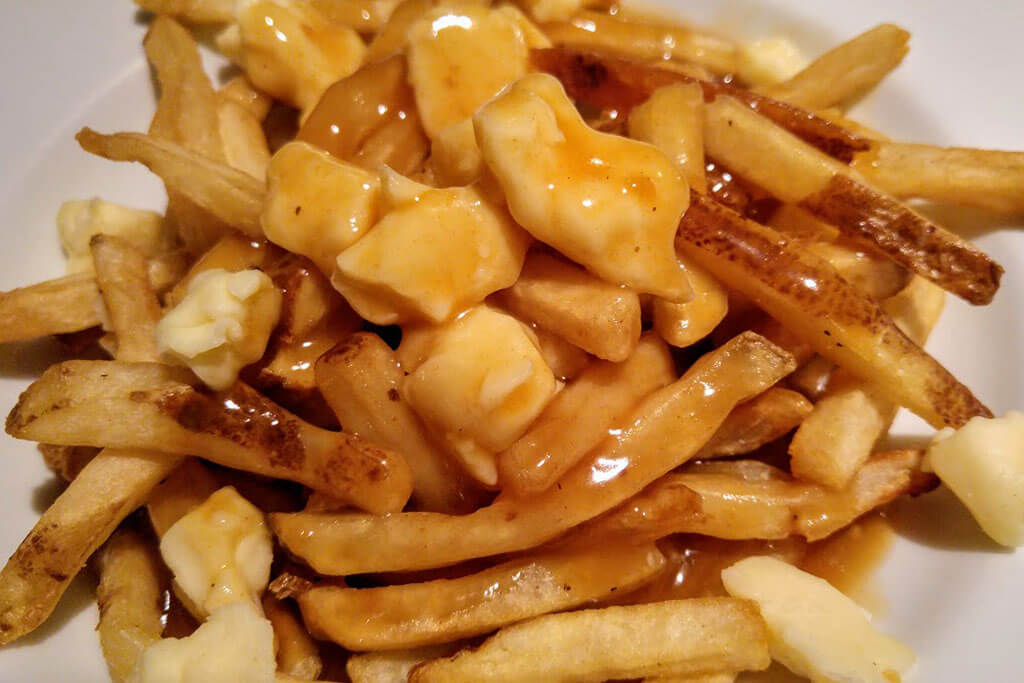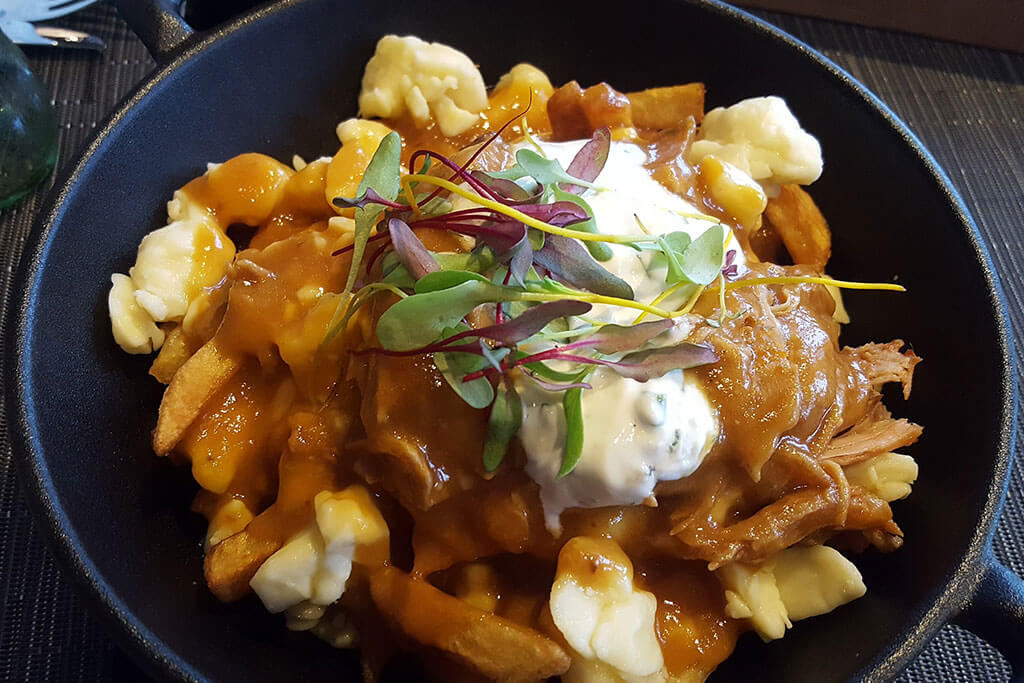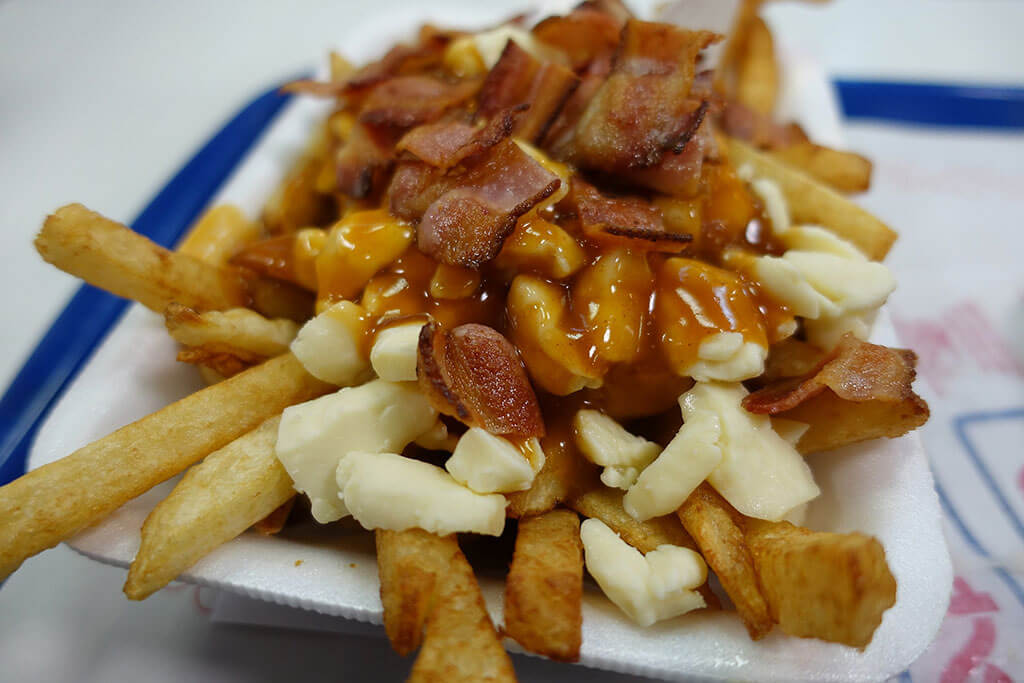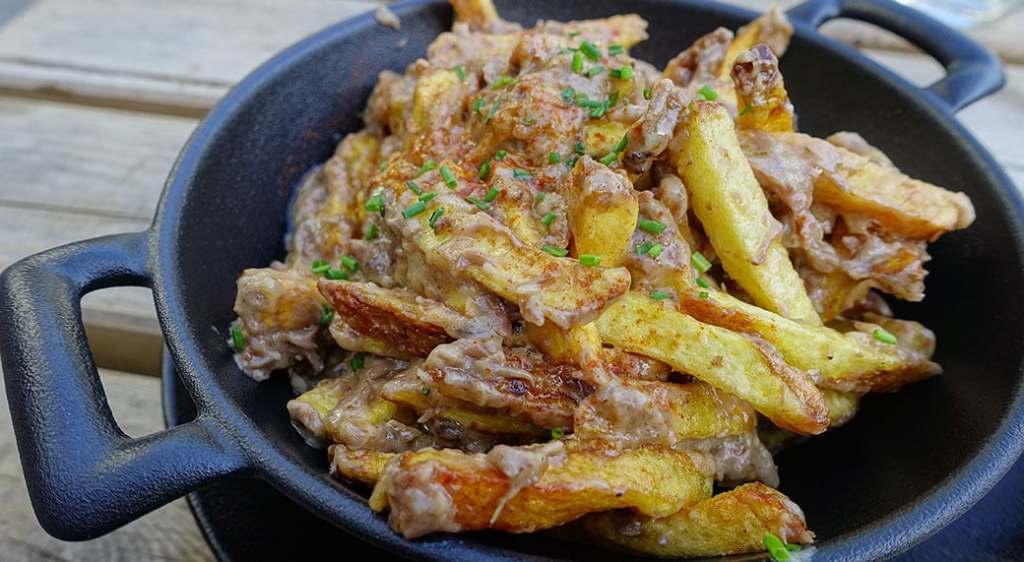Maybe you’ve heard of poutine or even tried it. If you haven’t, you will soon. This tasty snack out of Canada has recently garnered fans all over the world. Whether from a food truck or in a fine dining establishment, poutine has found its place within our culinary landscape.

What Is Poutine?
Poutine is a dish composed of fries, cheese curds, and brown gravy. It is a quintessential Québécois snack that emerged in the late 1950s. This tasty dish originated in the agricultural land of the Centre-du-Québec region of Canada, where many fromageries are located. Despite it being a relatively new creation, its popularity has blossomed. This savory treat has already made its mark within our global culinary landscape.
10 Regional Dishes You’ve (Probably) Never Heard Of »
It Takes Precision to Make a Fine Mess
The word “poutine” is Québécois slang for “mess”. But for a truly outstanding “mess,” one must carefully consider all its working components so that they mesh harmoniously. What it comes down to is fresh ingredients and a specific contrast of texture, temperature, and viscosity:
- Fries – Fresh cut, thick, and prepared with a crisp finish that will remain crunchy despite the heat of the gravy. The interior of the fries should have a soft finish.
- Cheese Curds – They must be extremely fresh, bite sized, and with a squeaky texture. Curds have a squiggly, organic shape.
- Gravy – Thick, rich, and brown. Traditionally made with beef stock, but vegetarian alternatives such as a roasted vegetable gravy have also grown in popularity. The temperature should be hot enough to soften the cheese curds.
Each ingredient should work in tandem with each other; no one element should overpower the flavor or texture of the other two.
Poutine is often consumed socially amongst friends. One bowl and several forks are presented to the table because the best way to enjoy poutine is family style. It is a favorite comfort food amongst both crowds of the daytime sober and the late-night intoxicated.

Haute Poutine
Many foods we enjoy today such as garlic, kimchi, and sushi, began as a way to sustain the lower class. And because of class relations, these foods were systematically disrespected. Poutine has followed a similar path. What first began as, what some Canadians believed to be an embarrassing food that lacked sophistication, it was picked up by foodies and chefs.
Now that the masses have access to poutine, fans can track it down in fast food joints, cafés, and in food trucks around Europe and Asia. And of course, many upscale versions have popped up by creative chefs. Everything from lobster to the controversial foie gras has made an appearance alongside this casual snack.

Fleurdelisé or Maple Leaf?
There is ongoing disagreement over whether it is appropriate to label poutine as a Canadian dish rather than a dish from Quebec. For gastro-historians, obscuring a regional dish into a national one blurs its roots and unique story.
To show your customers that you are knowledgeable about poutine and respect its identity, always associate it with a Quebecois Fleurdelisé (meaning the lily-flowered) flag rather than the broader Canadian symbol.



